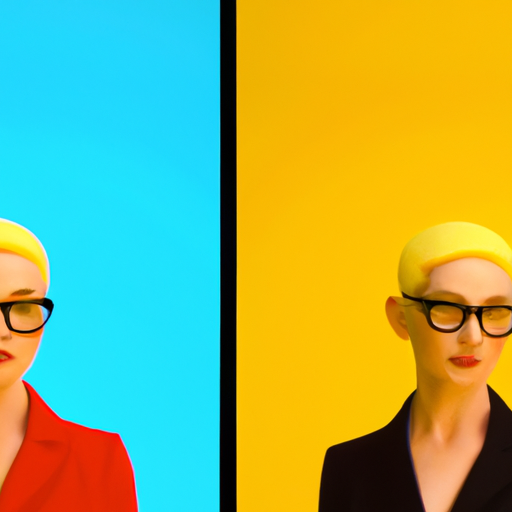-
Table of Contents
LGBTQ+ Representation in Art and Design
Art and design have always played a significant role in reflecting and shaping society’s values and beliefs. Over the years, the LGBTQ+ community has fought for visibility and acceptance, and art and design have been powerful tools in this struggle. This article explores the importance of LGBTQ+ representation in art and design, the challenges faced by LGBTQ+ artists and designers, and the positive impact it has on society.
The Importance of LGBTQ+ Representation
LGBTQ+ representation in art and design is crucial for several reasons:
- Visibility and Recognition: Representation allows LGBTQ+ individuals to see themselves reflected in art and design, providing a sense of validation and recognition. It helps combat feelings of isolation and invisibility, fostering a sense of belonging and self-acceptance.
- Breaking Stereotypes: Art and design challenge stereotypes and misconceptions about LGBTQ+ individuals. By showcasing diverse LGBTQ+ experiences, artists and designers can break down barriers and promote understanding and empathy.
- Advocacy and Activism: LGBTQ+ art and design can be a powerful tool for advocacy and activism. It raises awareness about LGBTQ+ issues, promotes social change, and encourages dialogue and discussion.
- Representation Matters: LGBTQ+ representation in art and design helps normalize diverse sexual orientations and gender identities. It sends a message that LGBTQ+ individuals are an integral part of society and deserve equal rights and opportunities.
Challenges Faced by LGBTQ+ Artists and Designers
Despite the progress made in LGBTQ+ rights, artists and designers from the community still face unique challenges:
- Discrimination and Prejudice: LGBTQ+ artists and designers often encounter discrimination and prejudice in the art world. They may face rejection from galleries, limited opportunities, and unequal treatment compared to their heterosexual and cisgender counterparts.
- Censorship: LGBTQ+ art and design can be subjected to censorship due to its explicit or provocative nature. This censorship stifles creative expression and limits the visibility of LGBTQ+ artists and their work.
- Underrepresentation: LGBTQ+ artists and designers are often underrepresented in mainstream art and design institutions. This lack of representation perpetuates the notion that LGBTQ+ art is niche or less valuable, limiting exposure and opportunities for LGBTQ+ creators.
- Tokenism: In some cases, LGBTQ+ artists and designers may be tokenized, with their work only being recognized or celebrated during Pride Month or LGBTQ+ events. This tokenism can undermine the authenticity and impact of their art.
Positive Impact of LGBTQ+ Representation
LGBTQ+ representation in art and design has numerous positive effects on individuals and society as a whole:
- Empowerment and Self-Expression: LGBTQ+ representation in art and design empowers individuals to express their identities and experiences freely. It provides a platform for LGBTQ+ artists and designers to share their stories, challenge norms, and celebrate their unique perspectives.
- Education and Awareness: LGBTQ+ art and design educate the public about the diversity within the community. It helps dispel myths, reduce stigma, and foster a more inclusive and accepting society.
- Community Building: LGBTQ+ art and design create spaces for community building and connection. It allows LGBTQ+ individuals to find solace, support, and inspiration through shared experiences and narratives.
- Social Change: Art and design have the power to influence social change. LGBTQ+ representation challenges societal norms, promotes equality, and encourages conversations about LGBTQ+ rights and acceptance.
Examples of LGBTQ+ Representation in Art and Design
There are numerous examples of LGBTQ+ representation in art and design that have made a significant impact:
- Keith Haring: Keith Haring, an openly gay artist, used his art to raise awareness about HIV/AIDS and advocate for safe sex practices. His iconic figures and bold lines have become synonymous with LGBTQ+ activism.
- Yayoi Kusama: Yayoi Kusama, a Japanese artist, explores themes of sexuality and identity in her work. Her immersive installations, such as “Infinity Mirrored Rooms,” create spaces for self-reflection and introspection.
- David Hockney: David Hockney, a prominent British artist, has depicted same-sex relationships in his paintings. His work challenges societal norms and celebrates LGBTQ+ love and intimacy.
- Studio Ghibli: Studio Ghibli, a renowned Japanese animation studio, has included LGBTQ+ characters and themes in their films. For example, “Whisper of the Heart” features a subplot about a same-sex relationship, promoting inclusivity to a younger audience.
Conclusion
LGBTQ+ representation in art and design is essential for fostering inclusivity, challenging stereotypes, and promoting social change. Despite the challenges faced by LGBTQ+ artists and designers, their work has a profound impact on individuals and society. By continuing to support and celebrate LGBTQ+ representation in art and design, we can create a more accepting and equitable world for all.
